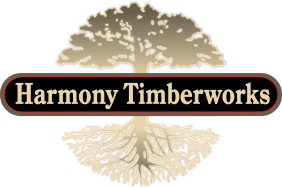Timber Frame Glossary
Timber frame:
The convergence of quality wood engineering and splendid displays that act as the overall support system for a home’s framework. Heavy timber frame construction can feature timber frame accents and exposed beam trusses used in conjunction with traditional construction, to full-frame timber systems that are complete buildings and structures.
Bay:
Vacant space or room that exists between timber bents.
Beam:
Often used as a load-bearing timber, this horizontal support is a vital structural component to any timber frame system. Supporting joists can be used to strengthen the system’s framework.
Bent:
Portion of the frame that features a series of connecting vertical posts and horizontal timbers.
Brace:
Like any other building material, timber frame systems are subject to the unyielding forces of physics and gravity. Braces, which are in the corners of timber frames, help offset these forces by providing necessary reinforcement to joists and beams.
Bent:
A premanufactured assortment or collection of beams.
Chord:
The bottom timber.
Collar ties:
Collar ties are the glue of our sturdy timber truss systems. Without the binding nature of well-placed collar ties, you might feel the gentle swaying of your home on a windy night. Collar ties essentially work to prevent the roof from separating at the ridge due to the uplift of wind.
Gable:
Triangle-shaped portion of the wall that is connected to the roof system.
Girts:
The unsung heroes of any timber frame system, girts never go against the grain in providing superior system protection. These horizontal timbers and beams interlock posts and sills, strengthening the entire system.
Greenwood:
Uncured timber that needs to be treated in the kiln prior to assembly.
Hand-hewn:
Hand-refined craftsman caliber piece of timber.
Hardwood:
Oak, maple, cherry, walnut, or hickory lumber. The go-to wood for many timber truss systems.
Hammerbeam:
Unlike a traditional beam that spans the entire width of a roof, shorter hammerbeams are instead supported by curved braces that are firmly placed against a wall. Arch-braces are then built on top to provide additional rafter support. Hammerbeam roof truss systems are decorative as they are strong and awe-inspiring. Many cathedral halls are government buildings that feature this elaborate styling that has withstood the test of time and the elements.
Joinery:
Timber frame engineering has a unique history that transcends computer machining. As you might know, timber frame systems supported some of the earliest homes on the American frontier. Harkening back to the nexus of timber frame technology, joinery has both a modern and traditional tilt. Joinery is often to referred to as the connecting of timbers with wooden components, such as pegs and tenons. This word can also mean any type of fastener used to connect wooden timbers.
Joists:
Precision-engineered pieces of wood that act as the glue of timber frame systems by connecting beams and strengthening clear-span areas in roofs and floors. Equal load transferring allows joists to carry the weights and counter sheering forces of nature.
Joints:
Where two timbers come together.
King Posts:
The King Post truss system is one of the most trusted and strongest roof styles. Instead of relying on horizontal support systems, like rafters and cross beams, king posts extend vertically from these supports to the apex of the truss. King posts connect the apex to the base of the truss, holding up the tie beam.
Mortise:
The receiving end of a joint that connects with a tenon.
Tenon:
Fits into a mortise, combining two pieces of timber.
Dovetail:
Mortise and tenon combination that resembles its namesake.
Post:
Vital vertical elements of a timber frame system. They provide added support, sort of like a column or pillar.
Pegs:
Wooden dowels used to lock joints of timber together. The underpinnings of any timber frame.
Plate:
Horizontal wooden base substructure that provides foundational support for posts and walls.
Purlins:
Horizontal roof beams that support rafters.
Queen Post:
A queen will always outdo a king. Unlike the king post that uses a singular supporting column, the venerable queen post truss system utilizes two. Queen post truss systems, therefore, offer more structural support than the traditional king. Queen posts can also support a wider span, which frees up more overhead room. Queen posts utilize two vertical posts that are placed on two sides instead of the apex. By avoiding central column placement at the apex, the queen truss system creates a more open-air look that doesn’t detract from the elegant, curved arches and rafters.
Ridge:
Another load transferring component that helps to equalize opposing forces by supporting ends of the rafter at the ridgeline.
Rafters:
Sturdy walls need a solid foundation, so it comes as no surprise that a strong, overarching roof needs a well-connected series of timbers to support the timber system’s shell.
Rough Hewn:
Reclaimed wood from old barns and other derelict structures.
Rough Sawn:
Un-sanded timber that is used in original form for a more rustic look.
Scissor Post:
Scissor timber frame truss systems are ideal for vaulted ceilings and cathedrals. Bottom chord pitches are directly correlated to the top chord span and pitch, as well as heel height. A good rule of thumb, the bottom chord pitch is only one-half of that of the top chord. In a scissor truss system, the bottom chord members cross each other, which gives the illusion of an open pair of scissors.
Summer Beam:
Floor system that connects girts and plates.
Spline:
A joint reinforcement used to splice two pieces of wood together. Typically a spline is sandwiched between the pieces of wood.
Tie Beams:
Horizontal beams that keep wooden elements from separating or spreading.
